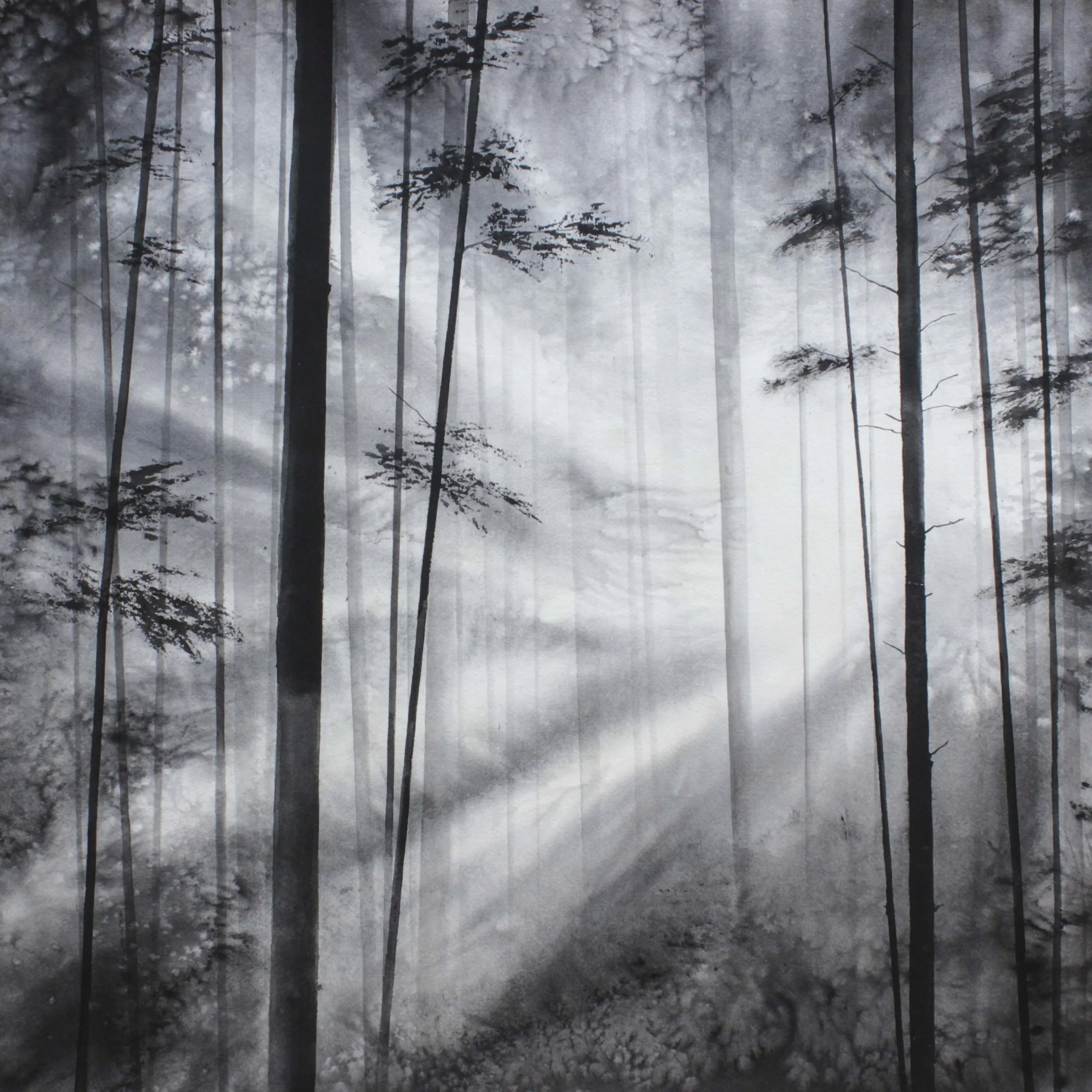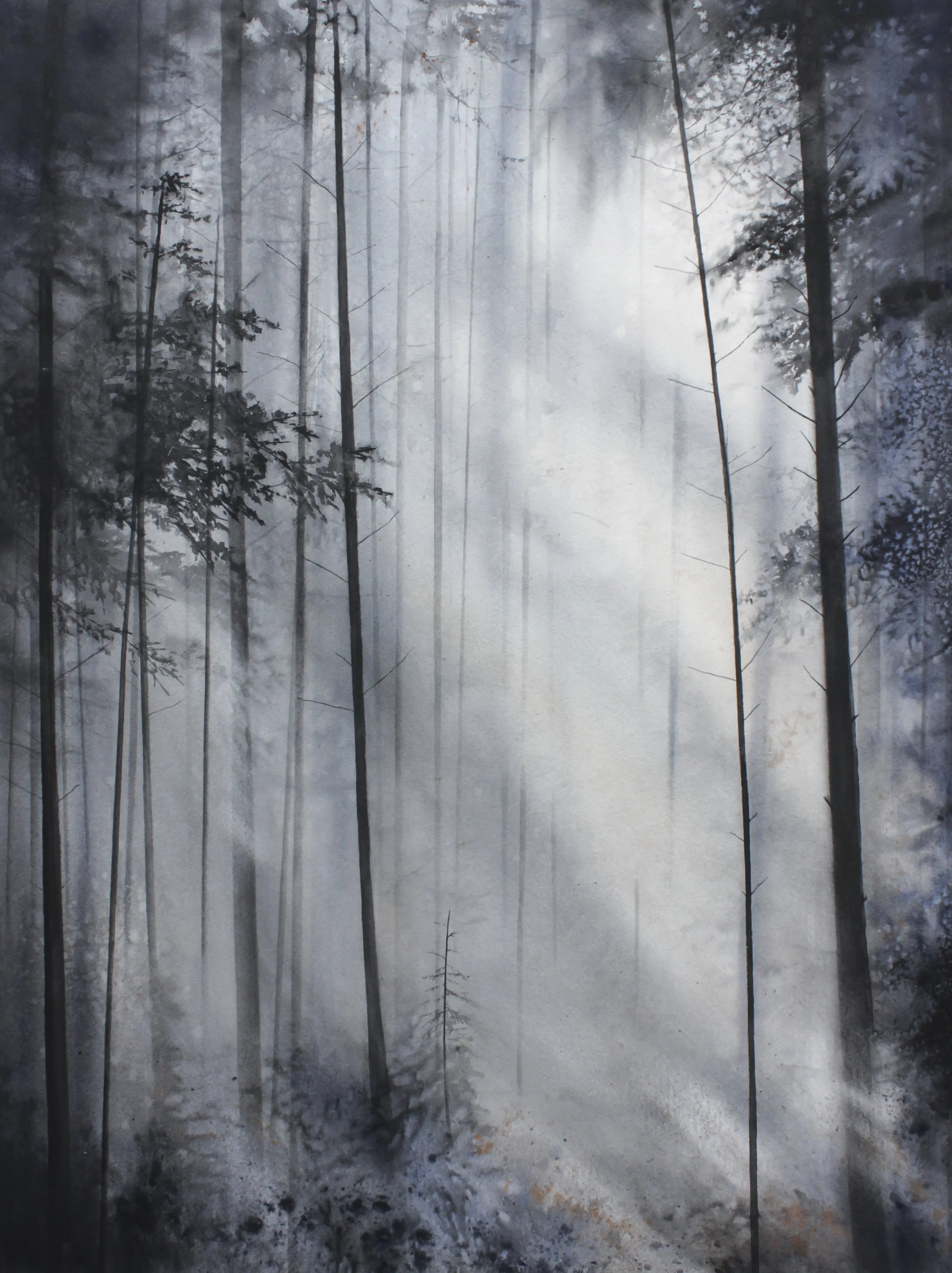Painting Light; Komorebi
Rays of Renewal, watercolor. (Awarded Best of Show, MGAL Juried Winter Art Show 2024)
Komorebi is a Japanese word that describes the beautiful phenomenon of sunlight filtering through the leaves of trees. While there is no direct English equivalent, komorebi captures the poetic interplay of light and shadow, evoking a sense of tranquility, nostalgia and connection to nature. This fleeting moment, where dappled sunlight dances through the branches, embodies the Japanese appreciation for subtle, transient beauty that can transform ordinary spaces into something magical.
Radiance, Watercolor, 2024
This concept has inspired artists, poets and photographers alike as it contains a serene and almost meditative quality. In many ways, komorebi reminds people to pause, observe and find beauty in everyday moments that might otherwise go unnoticed.
Dawn’s Whisper, watercolor, 2024
Whether captured in art, literature or personal reflection, komorebi serves as a gentle reminder of nature’s quiet wonders and the importance of mindfulness in an ever-moving world.
I realise that perhaps like many of you, I experienced this phenomenon even before I knew of its concept and origin. About a year into painting full time, my eyes were starting to open up to the world around me and I began to notice details in nature I’d overlooked on my daily walk or run and have to stop to take in the breath taking moment, in awe of the dispersed rays of light breaking through the thick, dense canopy and feeling the warmth touch my skin. The feeling was overwhelmingly beautiful and in turn I hoped to capture that sense in my paintings.
Creating komorebi in a watercolor painting requires a delicate balance of light and shadow to capture the effect of sunlight filtering through leaves. Here’s a step-by-step approach to how I attempt to achieve this ethereal look:
1. Plan the Composition
I start by sketching a rough outline of my scene focusing on the placement of trees and leaves, leaving open spaces where the sunlight will filter through. Next I decide on the light source and how the dappled light will fall and which areas will be cast into shadow.
2. Use a Light, Layered Approach
Watercolor is perfect for capturing the softness of komorebi. I begin with a light wash of paint in the areas where the sunlight will shine through leaving some areas of complete transparency.
3. Create Depth with Negative Painting
Negative painting is an effective technique for komorebi. Instead of painting the light directly, I add darker triangular sections with a dryer brush which will be the areas of shade. I then sparingly sprinkle salt grains and let it dry to create a soft, diffused effect.
4. Add Soft Shadows and Details
Once dry, I use straight strips of watercolor paper and an angular brush to create soft and light layers of vertical tree trunks using a damp cloth to lift some of the paint where the light rays would illuminate the trunk. For realistic textures, I use a dry brush or splattering technique to mimic the scattered, uneven light using a spray bottle to further diffuse.
5. Maintain a Soft, Dreamlike Quality
In the first layers, I avoid harsh edges, as komorebi is a natural, fluid effect. These abstract and undefined areas evoke the ever-changing quality of light passing through moving leaves.
6. Build Contrast with Pigment
For the trees that are closest to the viewer, I use darker pigment to allow for a silhouette effect. The paper must be completely dry for this stage to avoid bleeding. I finish by adding a few more darker and defined branches and marks with the brush that appear like leaves.
Cascading Light, watercolor, 2024
By using transparency, layering and negative space, you can create watercolor paintings that capture the enchanting essence of komorebi, bringing the warmth and serenity of dappled sunlight to life on paper.



